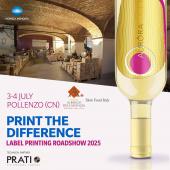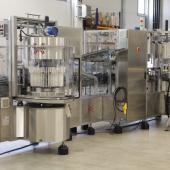With smart sensors, quality is controlled during production
Industrial production is always on the lookout for quality control systems that use the simplest possible technological solutions that are easy to integrate, innovative and highly flexible, able to manage multi-format and, above all, allow cost savings. Maurizio Cacciamani
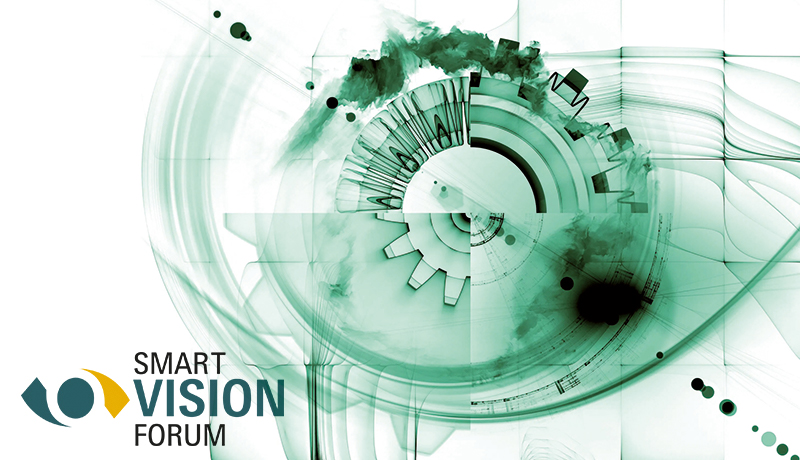
This is what emerged from the first SmartVision Forum promoted by Anie Automazione and AIdAM, organized online by SPS Italia as part of the events leading up to the SPS Fair which, as Francesca Selva (Vice President Marketing&Events Messe Frankfurt Italia) hoped, will be physically held in Parma next July (6-8).
Nicola Russo, Treasurer and Head of Vision Systems Sector AIdAM - Italian Association of Mechatronics Automation (which brings together 60 companies in the field of mechatronics) stressed that vision systems are one of the enabling technologies of Industry 4.0.
Marco Vecchio, Director of Anie Automazione, emphasized how the event, which is the result of the collaboration between the two associations, is able to bear witness on a complex topic from both users and suppliers of vision systems. Vecchio also confirmed that, with the budget law, the Italian government has given a strong impetus to the Transformation 4.0 plan, which also sees vision as one of the protagonists.
From stupid machines to intelligent ones
For the moderator Riccardo Oldani, Director of WE ROBOTS, robots from stupid machines are becoming "intelligent" thanks to vision systems and artificial intelligence that took its first steps with vision. Event cameras (now in industrial applications) and touch sensors for robots have been developed starting from vision technologies..
Metrotronics
In the opinion of Fabio Rosi, R&D Manager of VEA Srl, vision systems are of fundamental importance in the new science of metrotronics, that is, metrology + mechatronics, which allows automatic, reliable and repetitive measurement of products, guaranteeing real-time compensation of both the temperature of the piece and environmental vibrations, sub-resolution (controlled deep learning), intelligent filters for cleaning, self-calibration, surface analysis.
Artificial Intelligencee
Alessandro Liani, Chief Executive Officer of Video Systems, recalls that his company started in 2001 to apply artificial intelligence to vision and then extended it to the robotics sector. The technology now allows for successful surface checks, verification of the correct assembly of parts, identification of anomalies, identification and counting of objects with the help of deep learning. The next step that is being worked on is the automatic recognition, thanks to AI, of the elements that are being processed and the decision on how to process the parts. Thanks to artificial intelligence, the calibration and commissioning of the machine has been simplified. In contrast to traditional machines, whose functionalities are set and defined from the beginning, AI-enabled machines must learn through image and data acquisition. This can be done in-line (if the customer is willing to wait from a few weeks to a few months for the complete set-up but obtaining great performance), or off-line with an acceptable productivity at installation, productivity that will improve with subsequent e-learning activities.
How to control large areas
Silvano Scaccabarozzi, Chief Technical Officer of Vision Srl, illustrated a web inspection application with the use of several cameras for the control (dimensional and qualitative) of large surfaces such as glass sheets, plastic films for the food industry and the packaging of large objects (max. width 5.5 m and length 18 m). The features: speed up to 150 m/min; camera synchronization by encoder; controlled LED lighting for high efficiency and energy saving; acquisition of successive lines to create a single image (linear cameras); image size up to 400 Mbytes; processing in a few tens of ms; defect detection from 0.2 mm2. The systems are equipped with remote assistance that allows the installation of the system and its calibration from a distance thanks to augmented reality; the data can be consulted remotely.Vision has also created a 2D Robot Guide for the cosmetic sector for quality control of the various components before assembly.
Everything is easier with SmartCameras
There is no doubt that many vision applications require a lot of technical preparation on the part of the players involved, says Davide Nardelli, CEO of Advanced Technologies. Fortunately, with the advent of SmartCameras, which are simplified systems that have controller, vision and communication, as well as pre-configurations, installation and set-up are quick, fast and affordable for simple applications such as those in the logistics sector. While in the past, also because of costs, quality control took place at the end of the line, now there is a tendency to detect defects during production by using several systems on the line. In this case the SmartCamera loses its economic advantages in favor of multi-camera systems with a single controller and a single communication system. The current trend sees the growth of 3D systems for robot guidance that "give" intelligence to robots that need to move in space, optimizing their movements. Another maturing technology that will have great development is deep learning that requires a large implementation of neural networks by very specialized operators.
Multiple quality controls in pharma
Jacopo Belli R&D Engineer Alkeria Srl (which produces integrated vision systems for digital pathology) illustrated an application in the pharma field with multiple quality controls during the production of a drug in vials using an automatic sequencer. The automatic sequencer allows parameters to be dynamically varied during image acquisition. The result is a simpler mechanics, higher speed of analysis, possibility to realize multiple controls in a single passage of the sample, high reliability and robustness as required by the particularly restrictive safety standards that govern the world of pharma.
Motion can also be managed
Piergiorgio Romanò, Support Engineer at Beckhoff Automation Srl, took a step back in time, recalling how once vision systems consisted of a PC and the vision system itself: complex software was installed on the PC, as was the architecture. Data communication had its limits because non-deterministic protocols were used. Today, with the integrated approach, the architecture is much more streamlined: the PC processes the images, the control algorithms work in real time, there are no communication problems because there are no longer two separate systems, the software environment is unique with great advantages. In addition, the new integrated systems facilitate the management of motion, illuminator, I/O and communication, now even faster thanks to EtherCAT. For the end user, the advantages are: less latency and higher productivity, easier data management; while manufacturers have the possibility to choose between various scalable solutions in an open platform where they can for example choose between different cameras. The introduction of artificial intelligence allows and will allow for even more efficient systems that find ideal application in pharma and logistics (traceability).
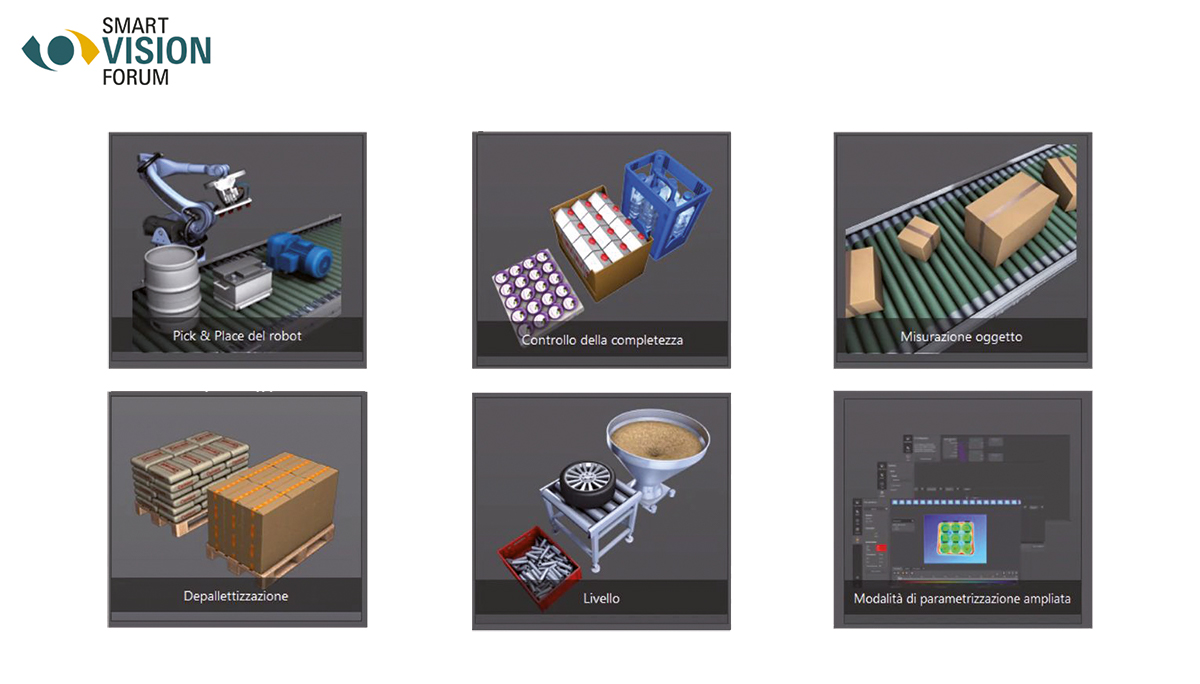
A few hours to become operational
«Now compact 3D systems are available on the market, which are easy to install and implement: for example, for sensor programming with apps (pick & place with robots, checking the completeness of a product, measuring an object, level measurements, depalletizing) just 10 steps and you are ready to operate!» So says Lorenzo Benassi Technical Manager IFM Electronic. This is thanks to the guided wizards that help the user and simplify his life. What's more, the lighting is integrated and extended parameterization is also available. But not all applications are simple, and complex ones require 3D vision systems and high levels of expertise that can be developed with the help of integrators and developers. However, in the pharmaceutical, food and logistics industries, many applications require only a few hours to become operational.
Improved productivity
«Customers need to be experts on their product but they need to have partners who can provide them with efficient solutions,» says Nicoletta Ghironi Marketing & Communication Southern Europe Automazione Industriale Srl. Today's vision systems need to be integrated into the automation system like any other device. Applications must be easy to develop, even if you're not a super expert, and they must be controllable from a single point with no latency. Remember that in packaging, response times must be in the order of microseconds. B&R offers a range of cameras with integrated algorithms, optics (for high quality images), integrated illuminators to choose from depending on the type of application. The advantages for the manufacturer are: the possibility to choose the components in a single system and reduced machine development time thanks to the availability of advanced functions. For the end user: very fast format changes via software, in case of failure the pre-calibrated chambers allow a very fast replacement of the device (with parameters reloaded via software) for a higher productivity of the plants and the reduction of maintenance costs.
Software on web browser
«The vision system software must be simple, usable without problems even by those who are approaching vision for the first time,» says Gian Luigi Abenante Machine Vision Manager Balluff Automation, « it must have tools dedicated to the most common applications (pattern maching, global analysis, OCR control, measurements) and help to customize the application while maintaining simplicity. The system must also be compact to facilitate installation even in machines where the Smart Camera was not included in the design phase». Balluff's Cockpit software solution is web browser based, communication uses basic protocols such as Profinet, Ethernet IP and I/O Link to manage the interface with PLC, robot, machine. PC-based systems are also available to manage multiple cameras (which must be chosen based on required resolution and frame rate).
Communication standards
In a system, there are many ways for the eye (the camera) to communicate with the brain (the PC). Over the years, we have seen an increase in the speed of image transmission which stops at the bottleneck constituted by the speed of image processing which, increasing in turn, requires an increase in the performance of communication networks. In the next 3-4 years, according to Marco Diani Ceo iMAGE S, the standard that will be most used will be Gigabit Ethernet with 5 Gbit/s speed using currently available cables. Some manufacturers already offer 10 Gbit/s but the high speed causes the cameras to overheat and the image processing speed (with thousands of frames/s) is difficult for the moment. For higher performance, the standard that will find greater use will be CoaxPress (6.5 Gbi/s) which uses coaxial cables insensitive to interference.
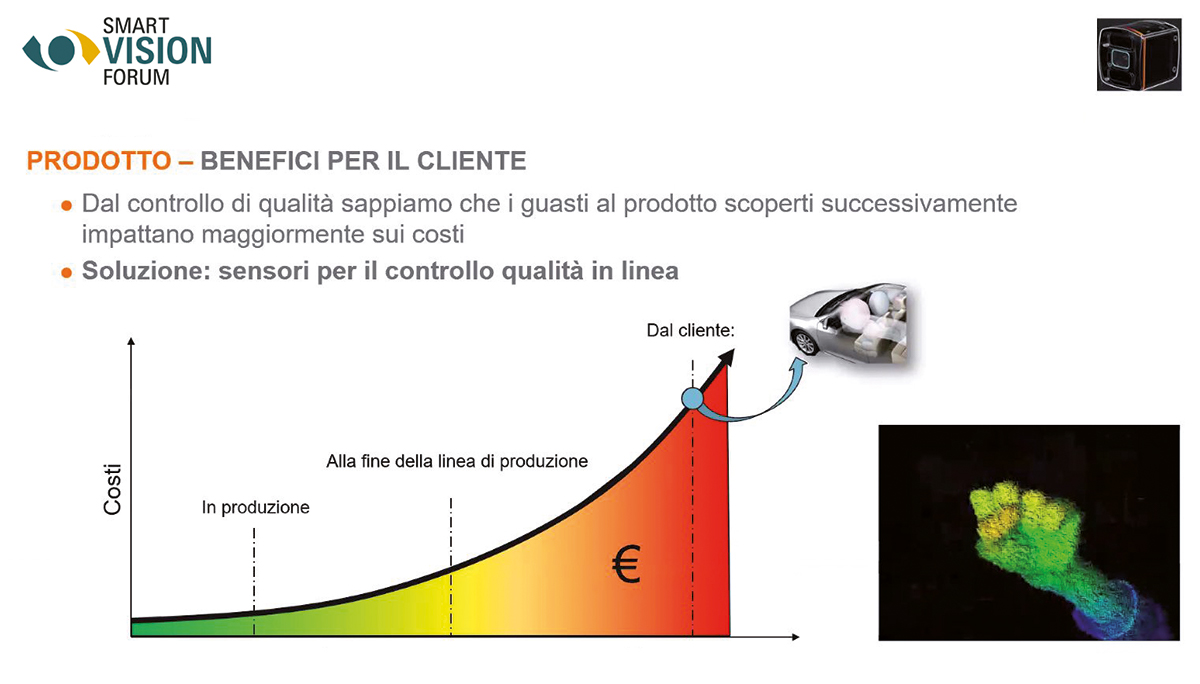
Accessories are important
The change in production lines must be matched by an evolution in applied vision technologies. According to Federico Brioschi, Product Engineer Vision and Basic & Advanced Sensors Omron Electronics, at the software level there is a strong development of algorithms aimed at simplification such as the use of AI and new 3D vision technologies; at the hardware level with innovative technological solutions to promote the integrability and flexibility of the solutions. With these lenses, compared to the classic C-mount optics, no adjustment of the optics or movement of the camera is required when changing format: it is possible to bind a new focusing distance directly to the format being worked on by simply acting at the software level. In addition, in the liquid optics with AF there are no mechanical movements inside the optics, which can therefore boast a long life even in case of dynamic AF. The use of multi-color illuminators, for example, multi-format, provides flexibility and better performance in applications where you change the format because different wavelengths allow you to "discover" other details in the objects to be analyzed. And a single click is all it takes to change via software the type of illumination that is built into the vision sensor.
2D or 3D?
«2D vision» explains Serena Monti Market Product Manager SICK SpA, «is ideal for parts with well-defined geometry, but it always needs a good contrast between object and carpet and can identify objects based on their shape or graphics and discriminate objects of different shapes. It evaluates the relative position and orientation with respect to a sample image, but is not able to return information related to the height of the object and is sensitive to changes in environmental conditions (light variation, dirt on the carpet, etc.)". What about 3D vision? «It's perfect for detecting objects with variable dimensions, typical of packaging. It is suitable for applications where there is no contrast between object and carpet and typically identifies objects based on size and height, returning the position (X,Y.Z) of the center of mass. It is less sensitive to changes in environmental conditions (light variation, dirt on the carpet, etc.). The scalability of the system is one of the frequent requests that come from the users», underlines Monti, «and Sick foresees the creation and maintenance of applications thanks to flexible software applications that manage the standard functionalities of the detection system, as in the case of gripping with carpet robots: camera-robot calibration, transmission to the robot of the position (X,Y,Z) of gripping and orientation, the management of the fact that an object can be in the middle between one image and the next or of objects that touch each other or are very close». In addition to these standard apps, there are also those developed on both classic algorithms that measure specific characteristics of objects and those based on new technologies such as Deep learning, ideal for detecting defects of a variable nature. It is foreseen the possibility to easily resize the hardware system according to the size of the framed field and the quantity/type of cameras used (smart camera or streamer), reusing the same software.
The advantages of automated quality control over manual quality control
According to Fabio Rosi of VEA Srl, here are the advantages of an automated quality control system over a manual one: - achieves higher reliability values;
- is constant in the evaluation;
- stabilizes average quality;
- overestimation of the defect is not necessary;
- reduces the number of false rejects;
- Reduces the costs of non-quality;
- It is not necessary to train the employees;
- Allows objective and immediate feedback;
- Reduces the overall costs of non-quality management.
Automated quality control systems can be profitably deployed in all manufacturing sectors and comply with the requirements of Industry 4.0.












